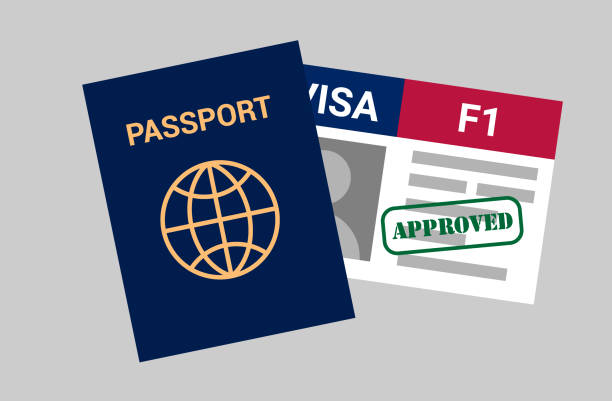Can you have f1 and m1 visas?
So let’s get this straight: Can you have f1 and m1 visas? Is it legally allowed? If you’re considering studying in the United States, you’ve likely come across two key visa options designed for international students—the F1 Visa and the M1 Visa. These visas open the door to world-class educational opportunities, but understanding their nuances is crucial to making the right choice for your study plans.
But here’s a common question students and immigration lawyers often ask: can one individual hold both F1 and M1 visas simultaneously?
This article breaks down everything you need to know about F1 and M1 visas, their key differences, eligibility requirements, application processes, and whether dual-visa status is a possibility.
Reading this to the end, you’ll be better equipped to make informed decisions about your academic and professional future in the U.S.
Understanding F1 and M1 Visas

Before exploring the possibility of holding both F1 and M1 visas, it’s important to understand what these visas are and how they differ.
What is an F1 Visa?
How do I start applying for a student visaThe F1 Visa is a non-immigrant visa issued to international students who wish to attend an academic institution in the United States. These include universities, colleges, high schools, and language training programs. Holders of an F1 visa must enroll in a full-time program and demonstrate intentions to return to their home country after their studies.
What is an M1 Visa?
The M1 Visa is also a non-immigrant visa but is designed for vocational or technical training programs. Students with an M1 visa typically pursue hands-on, skill-based programs, such as culinary arts, aviation, or automotive courses. Unlike F1 visa holders, M1 visa students have stricter restrictions on employment and program duration.
Key Differences Between F1 and M1 Visas
Though F1 and M1 visas serve similar purposes, they differ significantly in their scope and regulations.
Purpose of Study
- F1 Visa: Geared towards academic programs at approved institutions.
- M1 Visa: Tailored for vocational and technical training programs.
Duration of Stay
- F1 Visa: Visa length is linked to the duration of your academic program, with potential extensions based on Optional Practical Training (OPT).
- M1 Visa: Limited to one year initially or the length of the program with a possible short extension.
Employment Opportunities
- F1 Visa: Allows for part-time, on-campus employment during studies, and job opportunities under OPT after graduation.
- M1 Visa: Employment is highly restricted, and internships or work experiences must align directly with your program focus.
Eligibility Criteria for F1 and M1 Visas
Academic Requirements
Both F1 and M1 visa applicants must secure admission to an institution approved by the Student and Exchange Visitor Program (SEVP). An F1 visa requires enrollment in an academic program, while an M1 visa mandates admission to a vocational or technical school.
Financial Proof
Applicants for both visas must show adequate financial resources to cover tuition fees, living expenses, and other related costs for the duration of their stay.
Language Proficiency
Applicants are typically required to demonstrate proficiency in English, often through standardized tests like TOEFL or IELTS.
Application Process for F1 and M1 Visas
SEVIS Registration and Fees
Every applicant must register with SEVIS (Student and Exchange Visitor Information System) and pay the associated fee before proceeding with their application.
Completing the DS-160 Form
Applicants for both visas must fill out the DS-160 online non-immigrant visa application form as part of the process.
Attending the Visa Interview
The process culminates in a visa interview at a U.S. embassy or consulate, where applicants must provide their documents and answer questions about their study plans.
Can you have f1 and m1 visas simultaneously?
A common question for international students is whether it’s possible to hold both an F1 and an M1 visa simultaneously. The answer isn’t a straightforward yes or no—it depends on various factors and legal considerations.
Legal Implications of Holding Multiple Visas
While the U.S. does not explicitly prohibit dual visa status, you cannot use both visas simultaneously. The purpose of holding a visa is tied to your current activity within the U.S. Switching programs or study types may require you to switch visas rather than hold two concurrently.
Scenarios Where Dual Visas May Be Applicable
Having both visas may make sense in edge cases. For instance, if you’re transitioning from an academic program to a vocational course or vice versa, you may apply for the second visa. However, holding both at the same time without a clear purpose could raise questions from immigration authorities.
Risks and Challenges of Dual Visa Status
Dual visa intentions might cause complications during the visa interview or at any point when you need to demonstrate your intent to return to your home country. Always consult an immigration lawyer when exploring this option.
Switching Between F1 and M1 Visas
While holding both visas at the same time may not be ideal, switching visas is more common and straightforward.
When is Switching Necessary?
Switching may be necessary if you decide to transition from an academic program to a vocational course or vice versa.
How to Switch Between Visas
To switch, you must apply for a change of status with U.S. Citizenship and Immigration Services (USCIS). Careful planning is required to ensure there’s no gap in your legal status.
Challenges During Transition
The process of switching can be time-consuming and may require additional documentation, such as updated financial proof or admission letters.
Maintaining Compliance with Visa Regulations

For both F1 and M1 visa holders, staying compliant with visa rules is non-negotiable.
Reporting Requirements to SEVP
Students must notify their designated school official (DSO) and SEVP when there are changes in their enrollment status, address, or program.
Staying Within Visa Limitations
F1 visa holders must maintain full-time enrollment, while M1 students are restricted to the timeline of their program. Violating these terms can lead to termination of visa status.
Consequences of Violating Visa Terms
Failing to comply with visa conditions may result in termination of your SEVIS record, removal from the U.S., and difficulties in future visa applications.
Benefits of F1 and M1 Visas
Advantages for Students
Both visas provide the opportunity to access U.S. education, with F1 granting a broader range of programs and longer durations.
Opportunities for Career Advancement
Gaining skills from U.S. institutions—whether academic or technical—positions students for better career opportunities back in their home countries or abroad.
FAQs About F1 and M1 Visas
Can you study part-time with these visas?
No, both F1 and M1 visas require full-time enrollment.
What happens if my visa expires?
You must leave the U.S. once your visa expires unless you’ve applied for an extension or change of status.
Can I work while studying on an F1 or M1 visa?
F1 visa holders can work under certain circumstances, while M1 visa holders have stricter employment limitations.
Is there an age limit for applying for these visas?
There is no specific age limit as long as you meet the program and visa requirements.
How long can I stay in the U.S. after completing my course?
F1 students can stay for a 60-day grace period, while M1 students have a 30-day grace period.
Can I bring dependents under F1 or M1 status?
Yes, spouses and children may apply for F2 or M2 dependent visas.
Conclusion

Choosing the right visa is essential for a successful U.S. study experience, but navigating the visa landscape can be complicated. Whether you’re pursuing an academic degree on an F1 visa or a hands-on technical course on an M1 visa, understanding the differences, benefits, and processes is key.
If you’re considering holding dual visas or switching between them, consult an immigration lawyer to avoid potential pitfalls.







